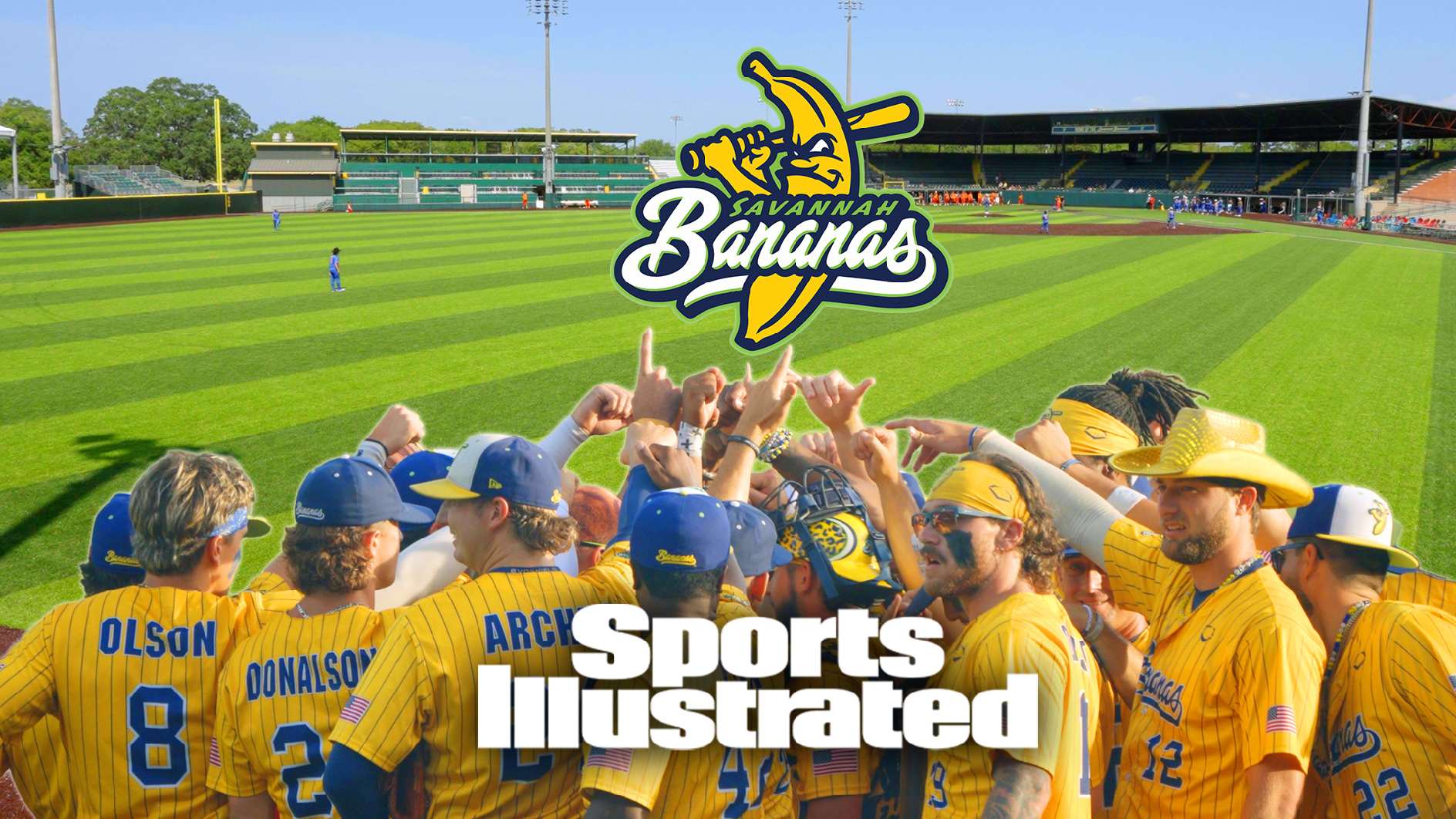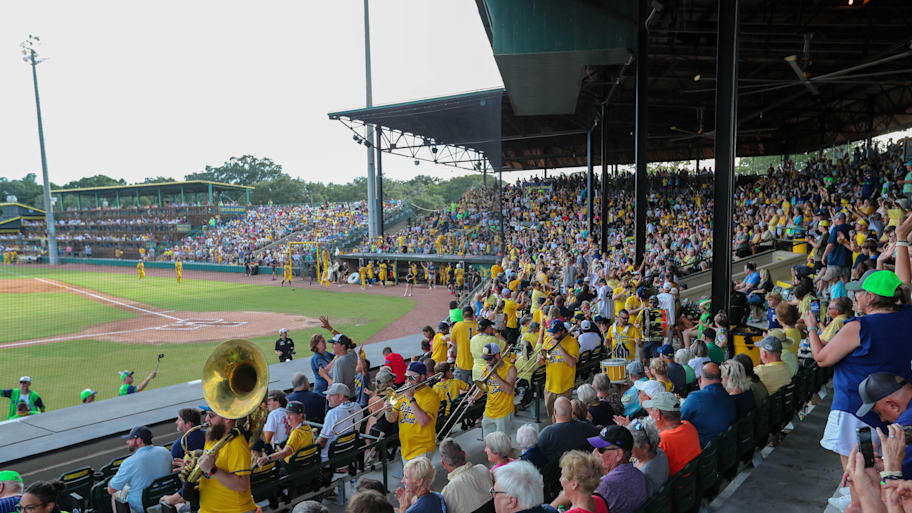
Odds are, if you’ve spent any time on the internet over the past decade, you’ve seen Grayson Stadium. You just might have been a bit distracted.
The 99-year-old Grayson Stadium in Savannah is the home of the Savannah Bananas, the team that has cultivated a legion of dedicated fans with its off-the-wall brand of baseball that it has dubbed Banana Ball. Among the rules of Banana Ball are a two-hour time limit, a ban on bunts and the ability to steal first base. The Bananas even have a rule where if a fan catches a foul ball, it counts as an out.
The Bananas call themselves “world famous”—and that isn’t an unearned boast. With more than 18 million followers across social media, the Bananas are a big deal. Their tour this summer includes 21 stops at MLB, NFL and college football stadiums—all of which have been sold out. Their unique brand of baseball-adjacent entertainment has become so popular that this year the Bananas added two more teams—the Firefighters and the Texas Tailgaters—who played their own games in sold-out minor league stadiums in addition to games against the flagship Bananas team. The Bananas have plans to add two more teams in 2026.
But Banana Ball started at Grayson Stadium, and the Bananas’ popularity is helping to preserve the historic ballpark.
Grayson Stadium was originally built in 1926 but was destroyed by a hurricane in ’40 and had to be rebuilt. The plans for the new stadium called for a much bigger structure than the one you see today, but construction was halted in ’41 due to the United States’ involvement in World War II. The result was a partially finished stadium that, while smaller than its designers had originally hoped for, has nonetheless served generations of baseball fans in coastal Georgia.
And those fans got to see some of the biggest names in the sport. Jackie Robinson, Babe Ruth, Mickey Mantle and Lou Gehrig all played exhibition games there. Henry Aaron came through town as a visiting player during his one season in the South Atlantic League. Later, his brother Tommie became the first Black man to manage a minor league team in the Deep South when he was named skipper of the Savannah Braves. Hall of Famer John Smoltz made a rehab start at a sold-out Grayson Stadium during his comeback from Tommy John surgery in 2001. Another Hall of Famer, Adrián Beltré, began his pro career in Savannah as a 17-year-old. More recently, All-Stars like Jacob deGrom and Ryan Zimmerman got their feet wet in pro ball while calling Savannah home.
Several factors have brought baseball to a halt at Grayson over its long history, though. Two decades after the aforementioned hurricane, the Savannah chapter of the NAACP called for a boycott of Grayson Stadium due to the city’s refusal to integrate the stands at the municipally owned ballpark. Attendance fell sharply and the team, a Class A affiliate of the White Sox, moved to Virginia in the middle of the season. Savannah didn’t get another pro team until six years later.
Affiliated baseball remained at Grayson Stadium until the end of the 2015 season, when the Savannah Sand Gnats of the South Atlantic League left the aging ballpark in favor of a brand new stadium in Columbia, S.C. Nearly 90 years after the ballpark was built, the era of professional baseball at Grayson Stadium was over.
That’s where the Bananas come in. They originally came to Grayson as an amateur college summer ball team in the Coastal Plain League and were an immediate success. Owner Jesse Cole’s fan-friendly approach to baseball helped set a new Grayson Stadium attendance record in the team’s first year in 2016. Later, the franchise began experimenting with the wacky Banana Ball variation of baseball. By ’23, the Banana Ball concept had become so popular that the team left the CPL, quit playing traditional baseball and became a full-time exhibition team.
Despite their busy touring schedule, the Bananas still call Savannah home. (They’ll play 29 home games at Grayson this season, and it’s where the team practices in between tour stops.) As the Bananas evolve, so too does Grayson. The team has invested in a variety of improvements to the ballpark, including additional seating, a new artificial playing surface and a new outfield party deck. Much of the stadium’s historic charm remains, though. The park’s brick exterior remains untouched, the grandstand includes wooden benches that are original to the 1941 rebuild, and there is a manual scoreboard in center field.
When attending a game at Grayson, you feel yourself pulled in two directions. On the one hand, the game on the field is cacophonous, frenetic and utterly goofy. It’s undeniably a product of the internet age and would gobsmack any time traveler from Grayson’s early days. But at the same time, you’re able to sense the history of the place. All the bells and whistles of Banana Ball can’t hide the fact that this is a century-old ballpark, the likes of which very few are left standing. It would be worthy of any fan’s bucket list even if it was just home to a college summer ball team. The fact that it now exists in this constant tension between new and old makes it even more special.
This article was originally published on www.si.com as Stadium Wonders: Old Meets New at Grayson Stadium, Home of the Savannah Bananas.
